History
Raeburn painted this portrait of his friend Robert Walker in about 1795, [1] when he was already a fashionable society portraitist in Edinburgh. When Walker died in 1808, Raeburn was one the trustees of his estate. The painting was inherited by Walker's widow Jean, and when she died in 1831, it was passed down to their daughter, Magdalen, and then to her daughter, Magdalen Scougall. Finally it passed in turn to the younger Magdalen's daughter and Walker's great-granddaughter, Beatrix Scott, who lived in Boscombe, Hampshire. In March 1914, Beatrix submitted the painting for auction hoping that it would make 1,000 guineas (£1,050), but it failed to find a buyer. In 1926, Beatrix sold the painting privately for £700 to Lucy Hume of Bournemouth, who in 1949 sent it for sale at Christie's in London. In all these various changes of ownership, there is no record of the painting coming to the attention of any art historian and it is not described in any of the early books on Raeburn's work. [2]
Christie's photographed The Skating Minister for their sale catalogue, which is believed to be the first time that the painting had been reproduced. It came to the attention of Ellis Waterhouse, the director of the National Gallery of Scotland (NGS) and was acquired for the nation for £525. The work did not become famous immediately, and it was not included in a book published by the NGS in 1972, Pictures for Scotland, which showcased the most notable works in their collection. [2] However, in 1973, it was reproduced as one of the 'British Painters' set of commemorative stamps to mark the 150th anniversary of Raeburn's death. [3] The painting was included in a 1997 exhibition of Raeburn's work at the National Portrait Gallery, London and was chosen to appear on posters advertising the event which were put on display across the capital. It reached an even wider audience in 1998 when The Skating Minister was included in an exhibition of British paintings, Pintura británica, at the Museo del Prado in Madrid, where images of it were widely reproduced on souvenirs. [2]
Appraisal
The painting is unusual in both its composition and its setting; it is unlike any other portrait by Raeburn. [1] The subject matter, perhaps intentionally conveying Walker's ties with Holland, is reminiscent of seventeenth-century Dutch artworks, particularly those of Hendrick Avercamp. The Reverend skates in the efficient but difficult "travelling position", with both arms folded across his chest, and his stern black outfit contrasts with the wild backdrop of Duddingston Loch. According to Andrew Graham-Dixon, "The pinkish grey crags and sky have been painted with great freedom, whereas the figure of Reverend Robert Walker himself is so tightly drawn and painted that he appears almost as a black silhouette against an icy, vaporous wilderness. Perhaps this was the artist's way of suggesting that, for all his apparent probity and self-restraint, the minister was at heart something of a romantic – a man, at any rate, with a penchant for communing with nature." [5]
Art historian Duncan Thomson notes that, "The filigree within the buckle on the strap at the skater's right knee and the taut complexities of the arrangement of the pink ribbons that binds the skates to his shoes are a reminder of the manipulative skills that Raeburn must have developed during his apprenticeship [as a jeweller and goldsmith] ... perhaps the tour de force of observation and the finding of equivalent forms are the marks that the skater (or those who have circled with him) has made on the ice: the curving grooves incised with some appropriate tool in a liquid, greyish white which has been spread over a darker grey that has been allowed to dry and the edges of these tiny furrows, more pronounced towards the bottom of the picture, tipped in with a purer white to simulate the froth of ice thrown aside by the cutting blade." [5]
Attribution controversy
In March 2005, a curator from the Scottish National Portrait Gallery suggested that the painting was by French artist Henri-Pierre Danloux rather than by Henry Raeburn. Once this information had been brought to the attention of the Gallery, the label on the painting was altered to read “Recent research has suggested that the picture was actually painted [...] by Henri-Pierre Danloux.” Since this time, many people have debated this idea. It has been argued that Danloux was in Edinburgh during the 1790s, which happens to be the time period when The Skating Minister was created. Supposedly the canvas and scale of the painting appear to be those of a French painter, although Raeburn critics argue otherwise. [6] [7]
Despite continuing controversy about its attribution, The Skating Minister was sent to New York City in 2005 to be exhibited in Christie's for Tartan Day, an important Scottish celebration. James Holloway, director of the Scottish National Portrait Gallery, told The Scotsman newspaper that his "gut reaction" was that it is by Raeburn. The newspaper reported that "it is understood that Sir Timothy Clifford, director-general of the National Galleries of Scotland, now accepts the painting is a Raeburn." [8]
In popular culture
Cambridge UK based musical group Clean Bandit based a character in their music video for their song "Dust Clears" on The Skating Minister painting. The video has been posted by the band on YouTube. [9] The skating minister is portrayed by skater Nick Martin and the skating scenes were filmed on Lake Vattern in Sweden. [10]
A copy of The Skating Minister can be seen displayed in the apartment of con-man Neal Caffrey in the USA television series White Collar .
In Alexander McCall Smith's novel The Sunday Philosophy Club, a character sends a card bearing Raeburn's picture to the protagonist, Isabel Dalhousie. [11]
Spanish architect Enric Miralles said that his west window panels at the 2004 Scottish Parliament Building invoked the form of The Skating Minister. [2]
The painting is the subject of the 2022 novel The Edinburgh Skating Club by Michelle Sloan, which focuses on the attribution controversy surrounding the work. [12]

The National is the national art gallery of Scotland. It is located on The Mound in central Edinburgh, close to Princes Street. The building was designed in a neoclassical style by William Henry Playfair, and first opened to the public in 1859.

Sir Henry Raeburn was a Scottish portrait painter. He served as Portrait Painter to King George IV in Scotland.
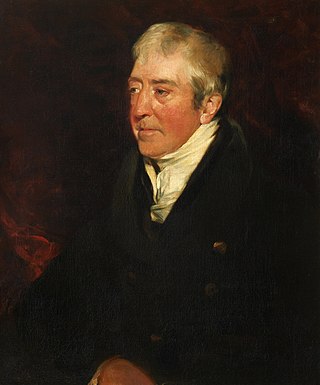
Alexander Nasmyth was a Scottish portrait and landscape painter, a pupil of Allan Ramsay. He also undertook several architectural commissions.
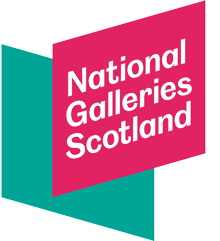
The National Galleries of Scotland is the executive non-departmental public body that controls the three national galleries of Scotland and two partner galleries, forming one of the National Collections of Scotland.

National Galleries Scotland: Portrait is an art museum on Queen Street, Edinburgh. Portrait holds the national collections of portraits, all of which are of, but not necessarily by, Scots. It also holds the Scottish National Photography Collection.
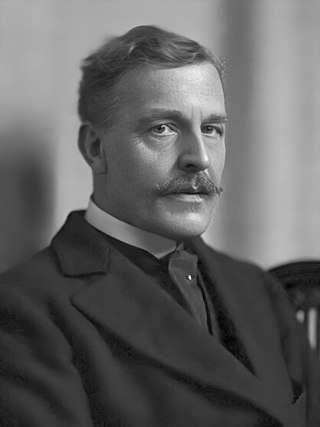
Sir James Guthrie was a Scottish painter, associated with the Glasgow Boys. He is best known in his own lifetime for his portraiture, although today more generally regarded as a painter of Scottish Realism.
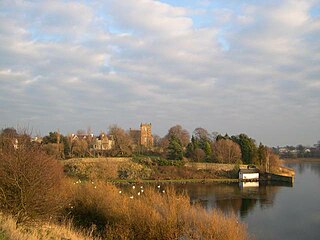
Duddingston is a historic village in the east of Edinburgh, Scotland, next to Holyrood Park.
The Greatest Painting in Britain Vote was a survey made by BBC Radio 4's Today programme in Summer 2005 with the aim of discovering the best-loved painting in Britain, in the manner of 100 Greatest Britons and The Big Read. It was criticised for the conservatism of the final selection as well as the unsuitability of the idea for the non-visual medium of radio.

Duddingston Kirk is a Parish Church in the Church of Scotland, located adjacent to Holyrood Park in Duddingston Village, on the east side of the City of Edinburgh. Regular services are held at the kirk, conducted by the minister, Rev Dr James A. P. Jack.
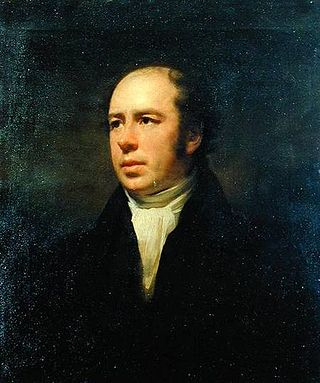
Rev John Thomson FRSE HonRSA was a Scottish minister of the Church of Scotland and noted amateur landscape painter. He was the minister of Duddingston Kirk from 1805 to 1840.
David Cowan Dobson (1894–1980) was a leading Scottish portrait artist. Dobson was born in Bradford to Scottish parents and around 1920 moved to London.
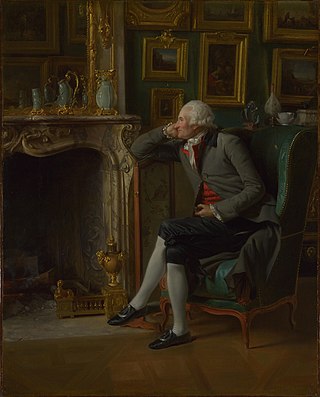
Henri-Pierre Danloux was a French painter and draftsman.

Duddingston Loch is a lake, or freshwater loch, in Edinburgh. It is one of the last two remaining natural lochs within the city, the other being Lochend Loch. It is situated to the south of Holyrood Park and lies southwest of the village of Duddingston.
Henry Raeburn Dobson also known by his middle name Raeburn Dobson, was a Scottish portrait and landscape painter from Edinburgh. He was active in Edinburgh and Brussels from 1918 until 1980. His father, Henry John Dobson (1858–1928), and his brother, Cowan Dobson (1894–1980), were genre and portrait painters. His portraits are mainly painted in oil, whereas his landscapes are mostly watercolours.

The Skater is a 1782 oil on canvas portrait of Sir William Grant by the American artist Gilbert Stuart. Painted while Stuart was living in London, it was the work that first brought the artist broad recognition.

The Edinburgh Skating Club is recognized as the first organized figure skating club. While some sources claim the club was established in 1642, most sources accept 1742 or 1744 as the date of its founding. The next-oldest skating club, in London, was not founded until 1830. The club was dissolved in 1966 after the decline in interest in combined figure-skating.

Charles Lees was a Scottish portrait painter who specialised in sporting and recreational subjects.

Robert Walker FRSE was a Church of Scotland minister, best known as the subject of the oil painting The Skating Minister by Henry Raeburn.

Scottish art in the eighteenth century is the body of visual art made in Scotland, by Scots, or about Scottish subjects, in the eighteenth century. This period saw development of professionalisation, with art academies were established in Edinburgh and Glasgow. Art was increasingly influenced by Neoclassicism, the Enlightenment and towards the end of the century by Romanticism, with Italy becoming a major centre of Scottish art.
Sir James Lewis Caw LLD HRSA was a Scottish art historian, critic and gallery director. He argued for the existence of an independent and free-standing "Scottish school of painting" arising in the second half of the 19th century.
This page is based on this
Wikipedia article Text is available under the
CC BY-SA 4.0 license; additional terms may apply.
Images, videos and audio are available under their respective licenses.















